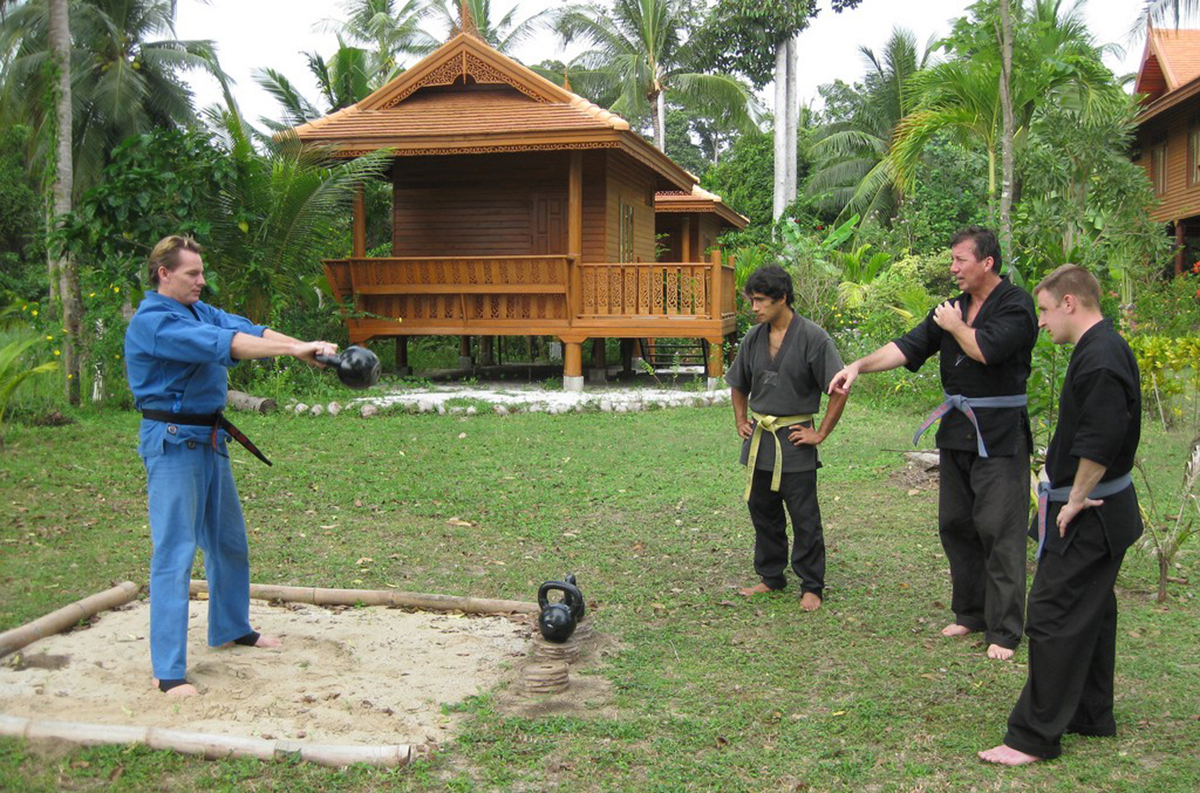Table of Contents
Fitness tools that look a lot like kettlebells were in use in Ancient Greece. The first recorded use of the word 'girya,' which means 'kettlebell,' was in 1704 in Russia. Since that time kettlebells have fallen from and returned to favor, being recently popularised by Pavel Tsatsouline. In a series of books and other teaching and sales aids, Pavel has foregrounded a style of kettlebell use called 'hardstyle,' which focusses on muscular tension and explosiveness. While it's helped a lot of people get fitter than they've ever been, it's also covered up some of the more interesting forms of kettlebell training that were preserved in Russia. Later these would be passed on or reinvented by others.

Kettlebell juggling is one of these forms.
If we think about it for a moment, kettlebells are comparatively light. Very heavy ones rapidly become too large to use the same way - after about 40kg they become very bulky and unwieldy. So how can we get more of a training effect out of these implements without ditching them and moving to barbells and dumbells?
You can buy T-handle-and-base-plate set ups that let you build your own swingable 'kettlebell' out of weight plates, letting you swing some serious poundage. It works, but its' limited and you can't do anything else with it.
Another way is to consciously use greater explosive force - to go like the hardstyle guys do and force every rep. What a lot of people don't know is that this approach was born in the Russian armed forces and it doesn't originate from the Russian kettlebell tradition; it comes from the karate the troops were taught as unarmed combat. That doesn't mean it's no good - but it does have drawbacks, one of which is that the emphasis on explosiveness and drive actually gives you worse form. Training this way reduces your movement quality compared with the 'gyrevik' method, or 'soft style.'
Soft style is characterized by fluidity rather than deliberate explosiveness. There's less hyperextension of the hips in a softstyle swing but the head position - in line with the spine, in contrast to the looking-forward posture of hardstyle - loads the hamstrings better, making the movement more efficient. The sport of kettlebell lifting requires participants to do three lifts - the jerk, clean and jerk and snatch - each for ten minutes without putting the bells down.
See Also: Kettlebell Clean And Jerk - For Power, Strength And Endurance
But doing the same three lifts can be dull So boot camp workout groups all over the world use kettlebells to do presses and rows, split swings and forward pushes, and other movements that aren't part of the traditional syllabus. There's nothing wrong with that but that's only providing variety.
What if there was a way of training kettlebells that could provide that variety but also improved training outcomes? One that forced improvements in proprioception and hand-eye coordination, that built on the foundation of good movement that good kettlebell training gives you, and that resulted in increased strength and fitness and fewer injuries and made training fun again?
- Photo courtesy of Rick Tew's NinjaGym™ Martial Arts by Flickr : www.flickr.com/photos/49663222@N08/4683929453
- Photo courtesy of Jay Whitmire by Flickr : www.flickr.com/photos/twopoos/4470135602
- Talking hardstyle with Pavel Tsatsouline: bit.ly/1kvPhE9
- Talking soft style with Steve Cotter: bit.ly/1oXyoIE
- Hardstyle/GS style: bit.ly/1olXfIe
- Aussie Kettlebells' 'beginning kettlebell juggling' video: bit.ly/1n91vWq
- Rob Clapham shows how it's done: http://bit.ly/1pSZGiO
- Nikolay Gorn shows off: bit.ly/UzpjLh


Your thoughts on this